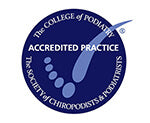6 Common Myths You Might Believe About Athlete's Foot

If your feet feel hot, sweaty and itchy, then you may be suffering from athlete’s foot — a common fungal infection of the skin on the foot. To help clear up some misconceptions about the infection, here’s the truth behind six common myths.
1) You have to be an athlete to get athlete’s foot
You don’t need to be an athlete to get athlete’s foot. In fact, the name is rather misleading. Anyone can get athlete’s foot, though it is commonly spread through communal showers and changing areas (hence the name).
Athlete’s foot can also arise from having excessively sweaty feet, not drying in between your toes after showering, and keeping your feet in warm, moist, and dark environments ideal for fungal growth. This includes keeping your feet in shoes and socks for long periods of time.
2) Athlete’s foot does not require treatment
Athlete’s foot is unpleasant and can spread to other areas of the body. So access swift treatment (over the counter antifungal creams and sprays) once you notice an infection.
Athlete’s foot can cause intense itching and burning, plus cracking, blistering, and peeling of the skin — which you won’t enjoy tolerating for too long. If your athlete’s foot worsens or spreads, walking around and playing sports can soon become uncomfortable activities.
Athlete’s foot treatment is usually cheap and easy to find at a standard pharmacy or drugstore.
3) Poor hygiene causes athlete's foot
Athlete’s foot isn’t related to cleanliness. You can wash your feet as thoroughly as possible every day, and still develop the infection.
This is because athlete's foot is caused by a number of fungal species which you can pick up from communal areas, like showers, pools, and changing rooms, where you walk around barefoot. Once your feet have been contaminated, they are a great environment for the fungus to breed — they are kept warm and sweaty inside your shoes.
However, it’s worth noting that athlete’s foot can also occur in dry, flaky areas and is common among sandal wearers in the summer.
4) Socks and shoes protect you from athlete’s foot
Wearing socks and shoes does not necessarily protect your feet from athlete’s foot. If you have already picked up the fungus from a contaminated surface or contact with another person with athlete’s foot, then shoes and socks actually provide an ideal environment for the fungus to thrive.
If you play lots of team sports in communal settings or can’t avoid walking barefoot around communal spaces, it’s best to expose your feet to lots of fresh air at home. If you’ve been in contact with the fungus, this will help to hinder its growth.
This being said, wearing socks or shoes in communal gyms and sports centres (plus flip flops in shared showers) can be beneficial as it prevents contact with potentially contaminated surfaces.
5) Once athlete's foot is treated, it won’t return
Unfortunately, athlete’s foot can return after being treated. If your feet come into contact with the fungus again, your athlete’s foot can reappear.
But don’t worry, there are a number of ways that you can help prevent athelete’s foot:
- Dry your feet thoroughly after washing them, especially between your toes where athlete’s foot often develops
- Dab your feet dry, don’t rub them
- Change your footwear on a regular basis. It takes 24-48 hours for footwear to dry out, so it’s best to alternate your shoes daily. Remove insoles to speed up the drying process and loosen any laces
- Wear breathable shoes with ventilation holes
- Use a separate towel for your feet and body. Wash them regularly and don’t share towels with other people
- Take your shoes and socks off when at home
- Wear clean socks every day and don’t share with others – cotton socks are best
- Don’t walk around communal spaces barefoot. Wear suitable shoe options like sports shoes or flip flops if possible.
Importantly, if you have athlete’s foot, don’t scratch the affected skin. This will only help it spread to other parts of your body.
6) Athlete’s foot only affects the foot
As mentioned, if you have athlete’s foot, don’t scratch your feet then touch other parts of your body. You can spread the fungus to areas like your groin (jock itch) and the skin under your arms. If this happens, you will then need to take further action —, seek specific jock itch treatment and cream.
It can also spread via contaminated sheets and clothing, so don’t share these with others if you (or they) have athlete’s foot.
To prevent athlete’s foot from spreading elsewhere, treat it with antifungal creams and sprays as soon as possible.
Athlete’s foot treatment from City Foot Health
If your infection doesn’t go away with athlete’s foot cream or spray, get in touch with us at City Foot Health. We’ll be able to figure out the best treatment option for your particular type of athlete’s foot and help you prevent further infection.
And if you have questions about a stubborn case of athlete’s foot, recurring athlete’s foot, or athlete’s foot prevention strategies, contact us for a chat or book an appointment.


